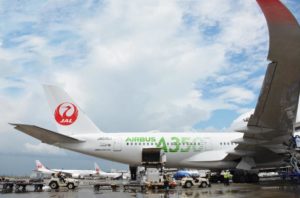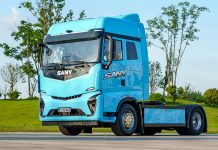 Oxford innovators Velocys are today celebrating success for their wood-chip-to-jet-juice sustainable aviation fuel, burned last week on the world’s first commercial flight thus powered and with paying customers.
Oxford innovators Velocys are today celebrating success for their wood-chip-to-jet-juice sustainable aviation fuel, burned last week on the world’s first commercial flight thus powered and with paying customers.
An Airbus A350, one of nine in Japan Airlines’ fleet, last week flew 500 miles from Tokyo to Sapporo with a 25% mix of Velocys’s proprietary low carbon fuel powering its Rolls-Royce Trent 1000 XWB engines.
According to Velocys, an Oxford University spin-off, JAL’s flight 515 on Thursday was the first commercial flight in the world to use sustainable fuel synthesised from gasified forest waste.
Produced under licence in Nagoya last year by partner Toyo Engineering, Velocys’s clean jet juice flowed, after its proprietary Fischer-Tropsch microchannel reactor refined hydrogen and carbon gases from biomass.
A hydrocracker is the production process’s final stage, taking the long chain hydrocarbons of synthesised gas, and cutting them to form naphtha and jet fuel.
The British firm claims its motion lotion can be burned in blends of up to 50% alongside conventional hydrocarbon-based fuel. Last week’s deployment by JAL followed a year of rigorous certification by engine makers, airlines and standards bodies as to purity and combustibility.
CEO Henrik Wareborn told investors today: “Fuel synthesised with the Velocys FT technology ..has a 70% lower carbon intensity than conventional fossil jet fuel”.
“(Velocys’s sustainable aviation fuel) offers ….90% lower particulate emissions, 99% lower sulphur emissions and lower nitrogen oxide emissions than conventional fossil fuels,” Wareborn claimed.
Rival avgas purifiers worldwide are pursuing a variety of possible chemistries, as the world’s airlines battle to reduce carbon emissions. Spouted at altitude, carbon dioxide from jet exhausts does proportionately greater damage to the planet’s atmosphere than on land.
JAL used the same Airbus flight on Thursday to test simultaneously a second sustainable fuel, an algae-based compound made by US firm IHI, in which JAL invests.
Cotton from old clothes and junk fashion formed the feedstock for JAL’s commercial flight from Fukuoka to Haneda this February. Waste cotton was purified according to technology developed by Japan’s government-backed RIITE, and transformed into fuel for the Boeing 787 flight.
Japan Airlines is committed to cutting 90% out of its 2019-level emissions by the year 2030. For flights from north America it will begin later this year sourcing from Fulcrum BioEnergy, a JAL-investee.
JAL has been toying with bio-based avgas ever since its 2009 trial of camelina, a variety of flax. Delivery of each of its five Airbuses since 2019 from the Toulouse factory have all been clean fuelled.



